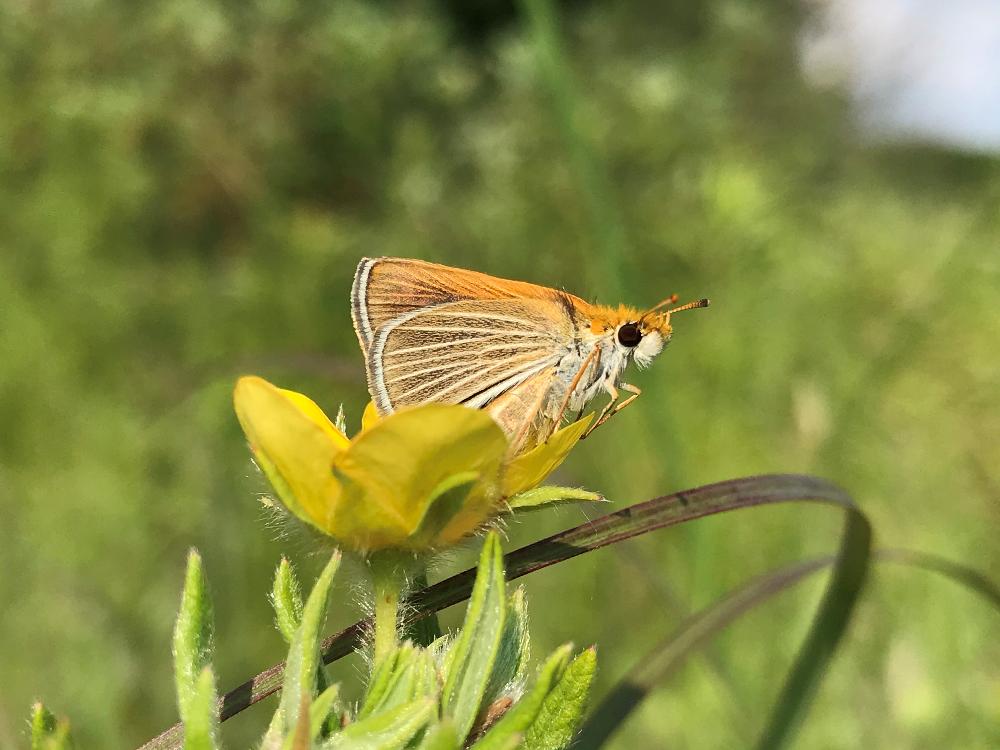Monday, Jan 23, 2023
One of the rarest butterflies, the Poweshiek skipperling, is on the brink of extinction. Its 'last best hope' is an international partnership that includes the Michigan Nature Association (MNA). With support from U.S. Fish and Wildlife Service, John Ball Zoo is working alongside Michigan State University’s (MSU) Nick Haddad Lab, Minnesota Zoo, Assiniboine Park Zoo in Winnipeg, Canada and MNA to help repopulate this endangered species through the Poweshiek Skipperling International Partnership.

Once abundant across the prairies of several upper Midwest states and central Canadian provinces, the tiny butterfly is now found only in a handful of sites in Oakland County, Michigan and in Manitoba, Canada.
“The Poweshiek skipperling is a tiny butterfly species, and it’s one piece of the biodiversity that supports life on this planet,” said Bill Flanagan, conservation manager at John Ball Zoo. “Removing just one small piece of biodiversity has an enormous impact on the natural environment.”
The population decline is due to multiple factors, including the use of pesticides, habitat loss and climate change. These contributed to a decades-long and now recent and rapid population decline that has scientists scratching their heads and worried about what their disappearance may mean for other pollinators. The globally endangered Poweshiek is now so rare that fewer than 70 individual butterflies were counted across the entire range in a 2022 census.
“When we talk of species extinction, we often think of it happening in some faraway place,” said Andrew Bacon, conservation director of the Michigan Nature Association. “But the plight of the Poweshiek skipperling butterfly underscores this critical issue right here in Michigan. The work that has been done to protect and manage these last natural areas containing the Poweshiek skipperling and the work being done to conserve and restore these populations are just part of this successful recovery effort. MNA is proud to work with our international partners, including John Ball Zoo, toward that species recovery goal.”
To keep the Poweshiek from going extinct requires a multi-pronged conservation intervention to rebuild the population. This unique international partnership requires management efforts to sustain the remaining habitat, restore other suitable habitats, captive management conservation and annual wild releases in the prairie.
Captive management plans call for a combination of captive breeding and “head starting” efforts. Head starting is a conservation practice in which wild-produced offspring are raised with human intervention to increase the survivorship of a sensitive age class and then released when they are less susceptible to predators or other environmental dangers. The captively bred Poweshiek skipperling are raised for future captive breeding and/or wild releases.
Throughout the winter season, the Poweshiek skipperling caterpillars live in special winter homes at John Ball Zoo. These consist of individual vials inside of an environmental chamber where their temperature and humidity are controlled. The environmental chamber stays at about 25 degrees Fahrenheit until the spring. The tiny green caterpillars live in a state of “diapause,” in which all metabolic activity is halted.
David Pavlik, research assistant at the MSU Haddad Lab, has been studying rare butterflies for the last five years and helps manage the program with John Ball Zoo.
“Whereas other butterflies, like monarchs, migrate to Mexico in the winter, the Poweshiek skipperling is a homebody,” Pavlik said. “The Poweshiek caterpillar develops a type of antifreeze, which supports its survival through the winter.”
John Ball Zoo and its partners are working diligently to help ensure the Poweshieks can make it to their adult stage. Once they reach adulthood and are released into the wild, these butterflies will contribute to the biodiversity of the natural areas they inhabit.
In the spring, John Ball Zoo, Minnesota Zoo and Assiniboine Park Zoo will remove their Poweshiek skipperling caterpillars from the winter environmental chambers and place them onto hostplants. The caterpillars munch on grass blades and cling to them, growing from May until June, then move into the chrysalis stage.
In early July, they’re ready to take flight into the wild.
